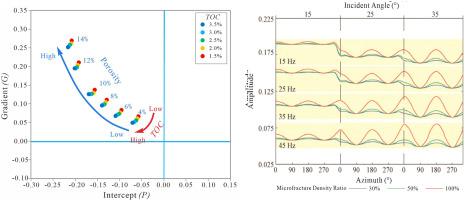Key geological and engineering technologies and research directions for shale gas exploration and development in western Hubei Province, China
IF 3.6
引用次数: 0
Abstract
Multiple sets of marine shale sequences occur in western Hubei Province and its adjacent areas within the Middle-Upper Yangtze region, offering substantial resource potential. However, their shale gas preservation conditions differ significantly due to the heterogeneous porosity and fracture system resulting from multistage tectonic reworking. This necessitates developing region-specific evaluation systems and exploitation techniques. Drawing on previous application cases and guided by the research paradigm of geology-engineering integration, this study presents key technologies potentially applicable to shales in western Hubei Province, spanning from reservoir and sweet spot evaluation to fracturing scheme design and fracturing performance monitoring. Several insights are gained accordingly. In terms of pore evaluation, the pore heterogeneity caused by compaction and rebound can be quantified using ideal shape coefficients and fractal dimensions, both of which are influenced by structural deformations, thereby guiding reservoir classification. For seismic data interpretation, pre-stack elastic inversion and azimuthal anisotropy inversion can be employed as core techniques, overcoming the limitation of individual post-stack attributes in typically detecting only major faults. Furthermore, the inversion boundaries are constrained using log-seismic joint quality control and geomechanical simulation, contributing to enhanced reliability of sweet spot evaluation and efficient exploration in areas with complex structures. For fracturing scheme design, scientifically formulated well shut-in strategies, tailored to regional geological characteristics, are essential to activate the fracture-matrix imbibition effect. Parameters with vastly different scales used in the design, such as meter-scale fracture half-length and millidarcy-scale fracture conductivity, can be co-optimized using artificial intelligence (AI) algorithms such as the genetic algorithm (GA) and the simultaneous perturbation stochastic approximation (SPSA) algorithm. Dynamic monitoring of fracturing performance can be achieved using trace chemical tracer technology, thereby reducing target ambiguity caused by structural complexity. Research on shale gas in the structurally complex areas of western Hubei faces multiple challenges, spanning from basic geological understanding to development engineering. These challenges create an urgent need for deep interdisciplinary collaboration. Therefore, this study highlights research into geology-engineering integration, aiming to enhance the efficiency of shale gas exploration and development in western Hubei.

鄂西页岩气勘探开发地质工程关键技术与研究方向
鄂西及其邻近中上扬子地区存在多套海相页岩层序,资源潜力巨大。但由于多期构造改造导致的孔隙和裂缝体系不均匀,页岩气的保存条件存在较大差异。这就需要发展特定区域的评价系统和开发技术。在借鉴前人应用案例的基础上,以地工一体化研究范式为指导,从储层、甜点评价、压裂方案设计、压裂性能监测等方面,提出了鄂西页岩具有应用潜力的关键技术。由此获得了一些见解。在孔隙评价方面,可以利用理想形状系数和分形维数对受构造变形影响的压实和回弹引起的孔隙非均质性进行量化,从而指导储层分类。在地震资料解释中,以叠前弹性反演和方位各向异性反演为核心技术,克服了叠后单个属性只能探测主要断层的局限性。利用测井-地震联合质控和地质力学模拟对反演边界进行约束,提高了甜点评价的可靠性,提高了构造复杂地区的勘探效率。在压裂方案设计中,根据区域地质特征,科学制定关井策略,是激活缝基质渗吸效果的关键。设计中使用的不同尺度的参数,如米级裂缝半长和毫达级裂缝导流能力,可以使用遗传算法(GA)和同步摄动随机逼近(SPSA)算法等人工智能(AI)算法进行协同优化。利用微量化学示踪剂技术可以实现压裂动态监测,从而减少由于结构复杂性造成的目标模糊性。鄂西构造复杂地区页岩气研究面临着从基础地质认识到开发工程的多重挑战。这些挑战迫切需要深入的跨学科合作。为提高鄂西页岩气勘探开发效率,本研究重点开展地工一体化研究。
本文章由计算机程序翻译,如有差异,请以英文原文为准。
求助全文
约1分钟内获得全文
求助全文

 求助内容:
求助内容: 应助结果提醒方式:
应助结果提醒方式:


